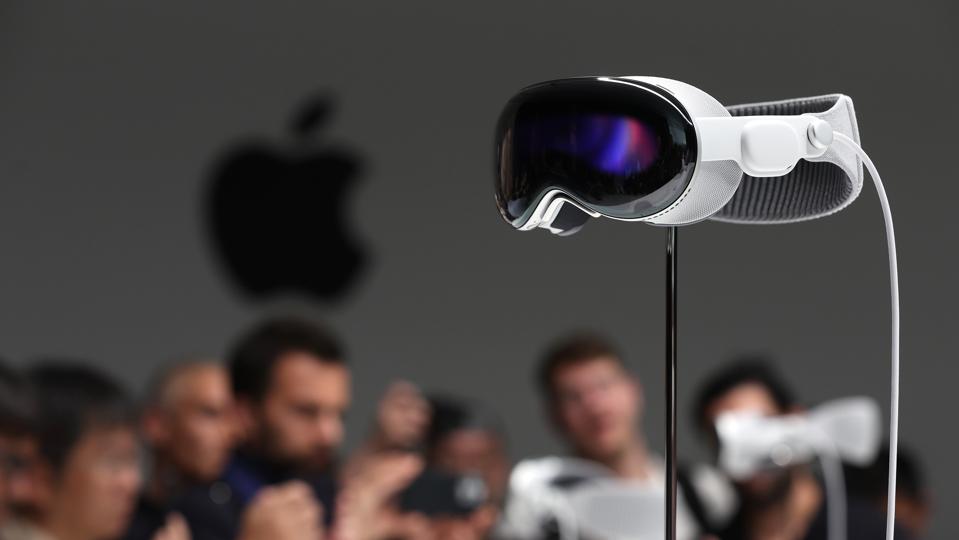As Apple prepares to launch its long-awaited Vision Pro augmented reality headset, company officials are reportedly considering using the $3,500 headset to diagnose and treat mental illness, The Information reported Wednesday, as the tech giant faces manufacturing issues ahead of its biggest launch in years.

The headset, which comes equipped with an array of sensors and cameras, could be used to measure users’ facial expressions, feelings and emotions, and detect levels of anxiety, depression, post-traumatic stress disorder and other forms of stress, sources familiar with the matter told The Information.
Key Takeaways
- That technology can reportedly also measure changes in weight, pupil dilation and evaluate users’ motion, potentially as a means to detect signs of Parkinson’s disease (Apple did not immediately respond to a request for confirmation from Forbes).
- In order to treat those conditions, sources said the Vision Pro could display images and sounds on an internal screen aimed at alleviating users’ stress, depression or anxiety.
- Although the headset is designed as an entertainment device, its potential use to address mental illness would not be Apple’s first dabble into the mental health arena—the tech giant introduced mental health features on its Health app in June, allowing iPhone, iPad and Apple Watch users to track their moods and monitor their mental health, in addition to their physical activity.
Contra
Despite the hype, Apple reportedly slashed its 2024 Vision Pro production forecast due to “difficulties in production,” saying it expects to sell under 400,000 headsets in its first year, according to a Financial Times report published in July, citing sources in Apple as well as Chinese manufacturer Luxshare, which Apple tapped to assemble its headset. Apple had previously estimated it would sell 1 million devices in its first year, drawing comparisons to the 1.7 million first generation iPhones Apple sold in 2007.
Key Background
Apple CEO Tim Cook unveiled the tech giant’s augmented reality headset in June, calling augmented reality a “profound technology,” and saying: “This is a day that’s been years in the making.” The device, which looks like a set of ski goggles, is equipped with a set of cameras and sensors, with two screens inside the headset—a technology Apple refers to as “spatial computing”. The Vision Pro follows the release of a slate of AR and VR headsets, including Facebook and Instagram parent company Meta’s release of its Quest Pro headset, as well as Microsoft’s HoloLens and Google’s AR headset, initially called Project Iris, which it plans to release next year. Apple plans to begin its rollout of the Vision Pro by appointment in its stores, where customers will be fitted and told how to properly use the headset, Bloomberg reported in July. That rollout will reportedly start early next year in larger metropolitan areas such as New York City and Los Angeles. Apple, in an apparent attempt to make its Vision Pro more accessible, is also developing a cheaper model of its headset.
Australian startup Enosis has also been using virtual reality to treat mental illness in a psychedelic setting.
Big Number
One in five. That’s the share of U.S. adults and teenagers aged 13 to 18 who struggle with mental illness, according to the Centers for Disease Control and Prevention. Roughly one in 25 U.S. adults struggle with serious mental illness, including bipolar disorder, major depression or schizophrenia.
This article was first published on forbes.com and all figures are in USD.


